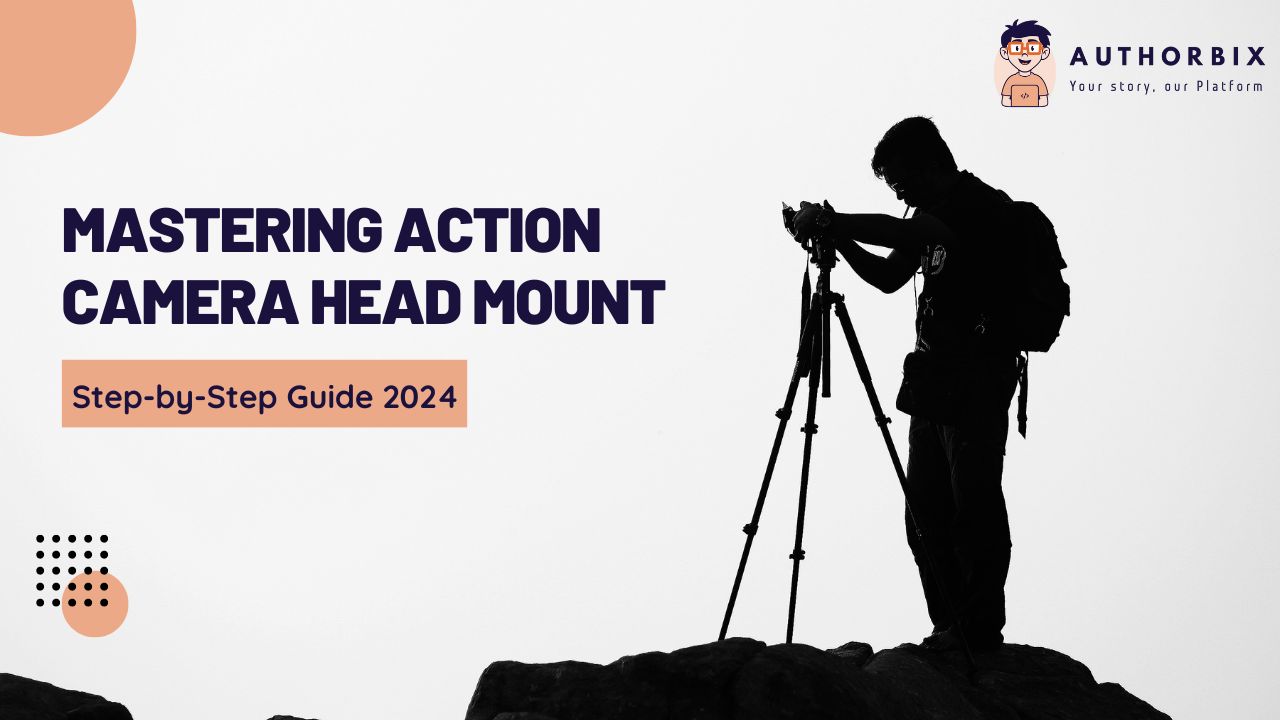Mastering Action Camera Head Mount: Step-by-Step Guide 2024

Action cameras have revolutionized how we capture our adventures, allowing us to relive the excitement from a first-person perspective. One popular accessory for action cameras is the head mount, which enables users to mount the camera securely on their head or helmet. In this beginner’s tutorial, we will guide you step-by-step on how to use an action camera head mount effectively. Whether you’re hiking, biking, or engaging in any action-packed activity, this tutorial will help you capture immersive and thrilling footage from your adventures.
Table of Contents
ToggleHere are the steps to Action Camera Head Mount
Step 1: Choose the Right Head Mount:
The first step in using an action camera head mount is to choose the right one for your needs. There are various head mount options available, including head straps, helmet mounts, and hat clips. Consider the activity you’ll be participating in and the type of headgear you’ll be wearing. Head straps are versatile and can be directly worn on your head, while helmet mounts provide a stable attachment if you’re using a helmet. Hat clips are useful if you prefer wearing a cap or hat during your activities. Select a head mount that is compatible with your action camera model and offers a secure and comfortable fit.
Step 2: Adjust the Straps or Clips:
Once you have chosen the appropriate head mount, it’s important to adjust the straps or clips to ensure a secure and comfortable fit. Loosen the straps or clips and position the head mount on your head or headgear. If using a head strap, place it securely around your head, making sure it sits comfortably above your ears and across your forehead. If using a helmet mount, follow the manufacturer’s instructions to attach it securely to your helmet. For hat clips, position them securely on the brim of your hat or cap. Make adjustments to achieve a tight and stable fit without causing discomfort.
Step 3: Attach the Action Camera:
With the head mount properly adjusted, it’s time to attach your action camera. Most head mounts have a quick-release mechanism or a designated attachment point for the camera. Align the camera’s mounting bracket with the head mount’s attachment point and securely fasten it in place. Ensure the camera is tightly secured to the head mount to prevent it from falling off during your activities. Double-check the attachment to confirm it is stable and secure.
Step 4: Check Camera Alignment:
Before starting your adventure, it’s essential to check the camera’s alignment to ensure it captures the desired footage. Adjust the camera’s angle and orientation based on your preferences and the activity you’ll be engaged in. If you’re biking or skiing, angle the camera slightly downward to capture the action before you. Experiment with different positions to find the one that offers the best field of view and perspective. Be mindful not to obstruct your vision or interfere with your movements. Take the time to test the camera’s positioning and field of view, ensuring it captures the desired footage without any distractions.
Step 5: Test Stability and Comfort:
Before embarking on your adventure, it’s crucial to test the stability and comfort of the head mount and the attached camera. Gently shake your head or headgear to ensure the camera remains securely in place. If you notice any wobbling or looseness, readjust the straps, clips, or mounting bracket to achieve a more secure attachment. It’s important to have a stable head mount to prevent shaky footage and minimize the risk of the camera detaching during intense movements. Additionally, pay attention to your comfort level. Make sure the head mount doesn’t cause any discomfort or strain, as this can affect your overall experience during the activity.
Step 6: Record and Review:
Once you have ensured a secure and comfortable setup, you are ready to start recording your adventure. Turn on the camera and begin capturing your first-person perspective footage. After your activity, review the recorded footage to ensure it meets your expectations. Make any necessary adjustments to the camera’s positioning or head mount for future recordings.
Conclusion:
Using an action camera head mount is a fantastic way to capture immersive and thrilling footage from your adventures. By following this beginner’s tutorial, including choosing the right head mount, adjusting the straps or clips, attaching the camera securely, checking camera alignment, testing stability and comfort, and reviewing the footage, you can confidently capture your activities from a first-person perspective. Remember to prioritize safety and comfort throughout the process, ensuring an enjoyable and memorable experience. So, grab your action camera, mount it on your head, and embark on your next thrilling adventure!
Read More: Thrive in Mobile Gaming: Navigate, Innovate, Monetize

Promotional vs. Transactional SMS: The Texting Guide

5 Best Music Festivals In The World: Must-See Music festival

JEE Main & Advanced: Two Pillars of Engineering in 2024

Promotional vs. Transactional SMS: The Texting Guide

Benefits of Android App Development: A Promising Future

Benefits of Opting to Pay for Programming Homework Assistance

Best Subtitles Websites: Find, Download, and Enjoy Movies

Promotional vs. Transactional SMS: The Texting Guide

5 Best Music Festivals In The World: Must-See Music festival

JEE Main & Advanced: Two Pillars of Engineering in 2024







